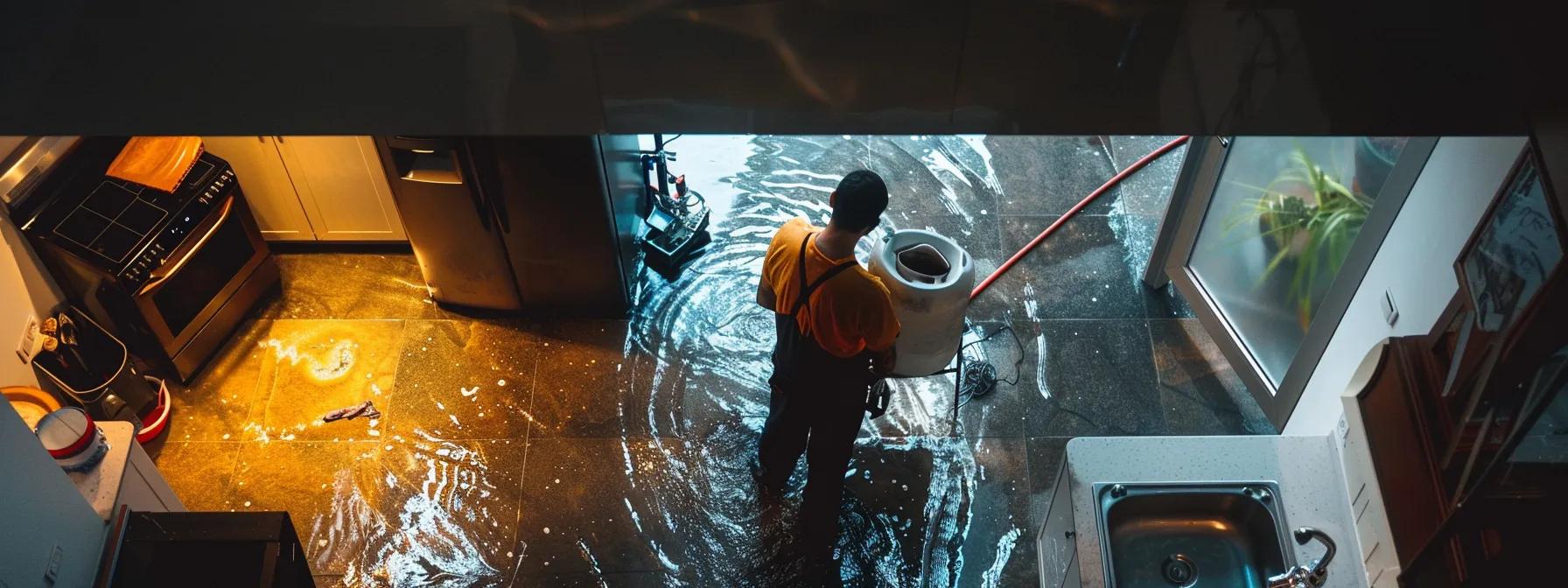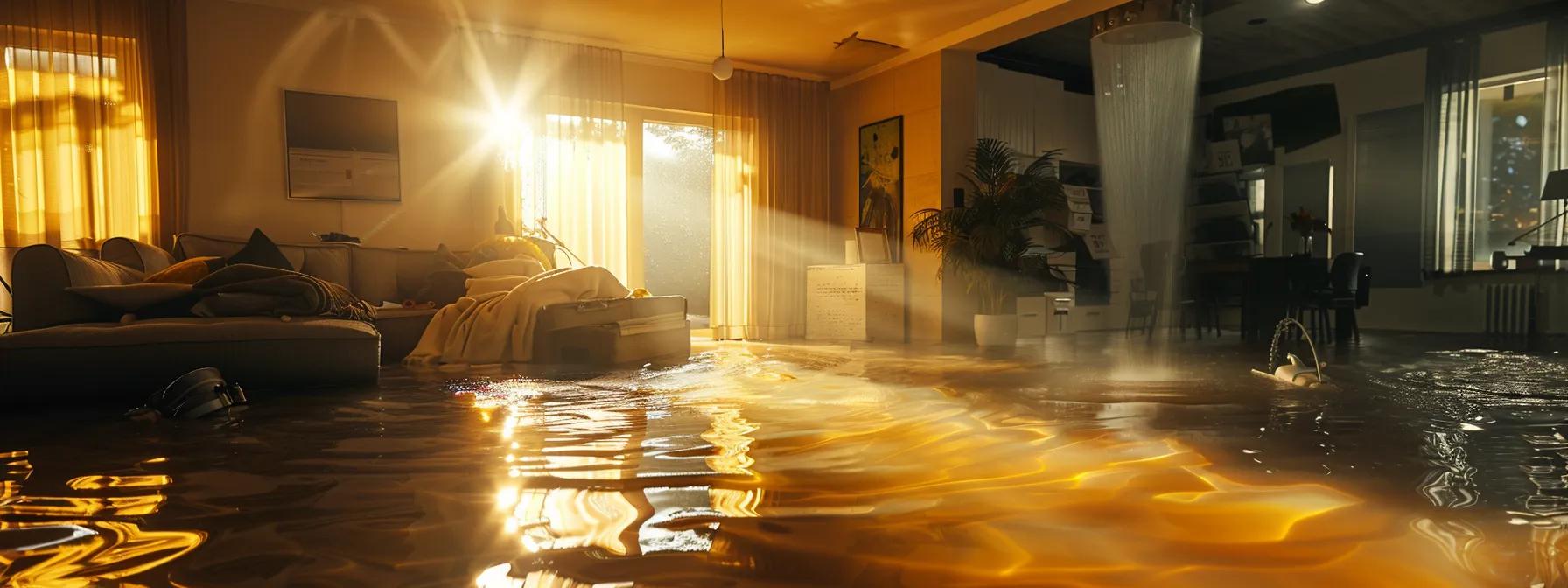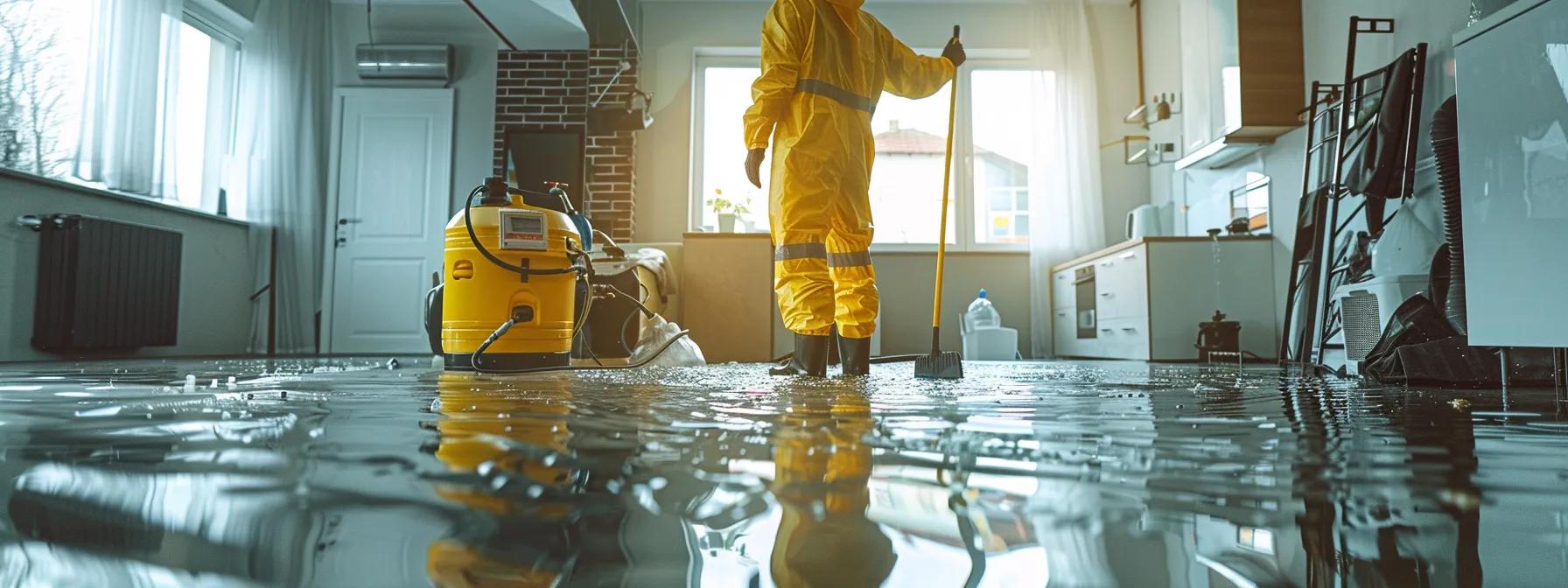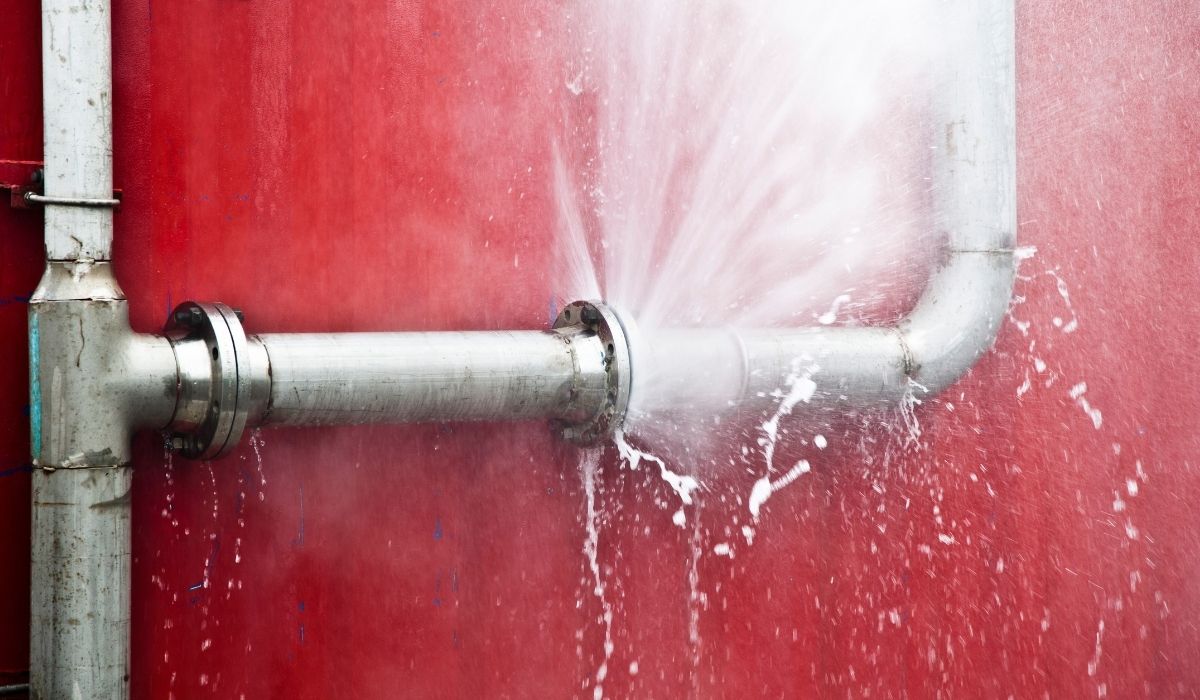Health Risks Associated With Untreated Water Damage

Health Risks of Untreated Water Damage
The presence of untreated water damage in a property creates a serious health risk that often goes unnoticed until severe symptoms appear. Water intrusion, whether from a leaking pipe, a flooded basement, or condensation issues, not only damages the structure but also encourages the growth of indoor mold, bacteria, and other contaminants. These hazards contribute to a host of adverse health effects—from respiratory distress and skin irritation to chronic immune system suppression and neurological impacts. Homeowners often underestimate the damage, focusing solely on aesthetic issues such as stains or structural decay, while the hidden dangers, including the proliferation of pathogens and mycotoxins, can compromise personal safety and overall health. Additionally, water damage can exacerbate pre-existing conditions such as asthma and allergies, making it essential to understand both the visible and invisible consequences. This article explains in detail the adverse health effects of water damage, identifies symptoms of mold exposure, outlines the dangers hidden in untreated water damage, discusses how contamination levels increase health threats, highlights the populations most at risk, and recommends protective measures for homeowners to consider. Understanding these risks not only informs restoration decisions but also supports the long-term health and wellbeing of occupants by promoting prompt remediation and prevention strategies.
Transitioning from general awareness, the following comprehensive analysis details the multifaceted health risks stemming from untreated water damage and illustrates why timely intervention is crucial.
Detailing the Adverse Health Effects of Water Damage

Untreated water damage is associated with a range of adverse health effects that can have both immediate and long-term consequences. The moisture provides an ideal environment for mold, bacteria, and other microbial growth, every one of which can significantly impair indoor air quality. When these contaminants become airborne, they can lead to respiratory issues, particularly affecting individuals with pre-existing conditions, such as chronic asthma or allergies. Prolonged exposure often leads to persistent respiratory distress and may result in illnesses such as bronchitis or even more severe conditions documented by research from the Centers for Disease Control and Prevention (CDC). For example, a study published in the “Journal of Allergy and Clinical Immunology” indicated that indoor exposure to mold increased the prevalence of asthma symptoms by up to 30% in susceptible populations (CDC, 2020).
Respiratory Distress and Illnesses From Dampness
The damp environment caused by water damage facilitates the growth of mold spores and bacteria, directly impacting lung function. Inhaling these spores, which may include allergenic and toxic species, can lead to wheezing, coughing, and shortness of breath. Studies have shown that individuals who reside in water-damaged environments have a significantly higher rate of respiratory infections. In particular, the National Institute for Occupational Safety and Health (NIOSH) reports that chronic exposure to damp conditions may contribute to long-term lung damage.
Skin Conditions Resulting From Water Contaminant Exposure
Contact with surfaces affected by water damage can lead to various skin conditions. The presence of mold and bacteria on drywall and carpet fibers may result in dermatitis, itchy rashes, or even fungal infections. Individuals with sensitive skin or pre-existing dermatological issues are particularly susceptible to such reactions. Research by dermatologists has demonstrated that prolonged contact with mold-contaminated surfaces can disrupt the skin barrier, leading to increased inflammation and discomfort.
Heightened Allergic Reactions in Water-Damaged Buildings
The allergens produced by mold and bacterial colonies not only trigger respiratory symptoms but also provoke heightened allergic reactions in many individuals. People sensitive to these allergens can experience symptoms ranging from nasal congestion and itchy eyes to severe allergic rhinitis, which may require long-term management with antihistamines or steroids. Multiple studies have confirmed that water-damaged buildings are linked to increased levels of airborne allergens, thereby escalating the risk of seasonal and perennial allergies.
Neurological Impacts From Mycotoxins and Bacteria
Certain molds produce mycotoxins that can have neurotoxic effects when inhaled or ingested. These mycotoxins have been associated with cognitive impairment, memory loss, and even mood disorders such as depression. Research published in the “International Journal of Environmental Research and Public Health” highlights that even low-level exposure to mycotoxins over extended periods can lead to noticeable neurological deficits, especially in older adults and those with pre-existing vulnerabilities.
Immune System Suppression From Chronic Exposure
Chronic exposure to the contaminants found in untreated water damage can suppress the immune system, making individuals more susceptible to infections. The continuous inhalation of mold spores and bacteria not only triggers inflammatory responses but, over time, also exhausts the immune system’s defenses. This suppression may lead to more frequent colds, persistent flu-like symptoms, or even severe systemic infections. Studies have quantified immune suppression by showing alterations in cytokine production and reduced immunoglobulin levels in individuals exposed to high concentrations of indoor mold (NIOSH, 2021).
Key Takeaways: – Water damage creates an ideal environment for toxic mold and bacteria, leading to significant respiratory and immune issues. – Dampness from untreated damage increases the risk of developing skin conditions, allergies, and chronic respiratory distress. – Exposure to mycotoxins can impair neurological function, while long-term exposure suppresses the immune system.
Recognizing Key Mold Exposure Symptoms

Mold exposure can trigger a range of symptoms that vary in severity, depending on the individual’s sensitivity and the extent of exposure. Recognizing these symptoms early is crucial in mitigating long-term health consequences, particularly in environments where water damage has promoted mold growth. Persistent respiratory issues, nasal congestion, and ocular irritation are some of the most commonly reported symptoms. Health professionals often advise occupants in water-damaged buildings—especially those with asthma or pre-existing allergies—to be vigilant for any signs of mold exposure.
Persistent Cough, Wheezing, and Shortness of Breath
A persistent cough and wheezing are among the first indicators of mold exposure. These symptoms are caused by the inhalation of mold spores, which irritate the airways and can trigger bronchial spasms, particularly in asthmatic individuals. Studies have reported that over 40% of individuals living in water-damaged homes exhibit chronic cough and shortness of breath, making it a significant public health concern.
Nasal Stuffiness, Sinus Congestion, and Runny Nose
Exposure to indoor mold often leads to nasal and sinus issues. Many occupants report continuous nasal stuffiness and sinus congestion, which can evolve into chronic conditions such as sinusitis. These symptoms are exacerbated by the immune system’s reaction to mold proteins, which prompt inflammation in the nasal passageways and sinuses. Enhanced by allergens, these symptoms can severely reduce the quality of life.
Eye Irritation, Watery Eyes, and Redness
Mold spores and particulate matter become airborne and irritate the eyes. This exposure is known to cause watery eyes, redness, and a burning sensation. In environments with high concentrations of mold, especially in water-damaged spaces, over 25% of residents may experience significant eye irritation, which, if untreated, can lead to more serious ophthalmic issues.
Frequent Headaches or Migraine Onset
The volatile organic compounds (VOCs) released by mold can trigger headaches and migraines. These compounds interfere with normal neurological function, causing frequent headaches that are not easily alleviated by standard over-the-counter pain medication. Research supports a strong correlation between indoor mold exposure and the incidence of migraines, particularly in individuals also suffering from allergies.
Unexplained Tiredness and Bodily Discomfort
General fatigue and bodily discomfort often accompany prolonged exposure to mold. The constant inflammatory response elicited by the immune system can lead to a state of chronic fatigue, even when other sleep parameters are normal. This unrelenting tiredness, combined with generalized aches, limits daily activities and can be a precursor to more severe health issues.
Key Takeaways: – Key symptoms of mold exposure include persistent respiratory issues, nasal congestion, and ocular irritation. – Headaches and chronic fatigue are common in water-damaged environments, suggesting systemic involvement. – Early detection of these symptoms can prevent progression to more severe health conditions.
Uncovering the Hidden Untreated Water Damage Dangers

Beyond the visible signs of water damage lie numerous hidden dangers that pose substantial health risks. Untreated water damage creates an environment ideal for the proliferation of harmful microorganisms and the leaching of hazardous chemicals, substantially contributing to a decline in indoor air quality and the overall health of building occupants. Often overlooked, these dangers can escalate quickly, turning minor leaks and damp areas into a serious public health concern if not addressed promptly.
Proliferation of Harmful Bacteria and Pathogens
Water accumulation provides an excellent growth medium for bacteria and other pathogens. In untreated conditions, stagnant water can support colonies of Legionella, Escherichia coli, and other harmful microbes, which when aerosolized, can cause severe infections. According to a peer-reviewed study in “Environmental Health Perspectives,” water-damaged environments can see a 50% increase in bacterial colonies, which significantly raises the risk of respiratory infections and gastrointestinal disorders.
Viral Risks Associated With Stagnant Water
Stagnant water can also serve as a breeding ground for viruses. In cases where water damage interacts with sewage or contaminated runoff, viral pathogens such as norovirus and hepatitis A may be present. Research suggests that enclosed spaces with persistent dampness and poor ventilation are particularly susceptible to viral outbreaks, increasing the transmission risk among residents.
Chemical Contamination From Saturated Materials
Materials affected by prolonged water exposure may leach chemicals such as formaldehyde and volatile organic compounds (VOCs) into the indoor environment. This chemical contamination can result from the breakdown of drywall, insulation, and even wooden structures. These substances are associated with chronic respiratory irritation and have been linked to more serious conditions like chemical sensitivities or increased cancer risk over long periods of exposure.
Structural Weakening and Potential for Accidents
Beyond the immediate health hazards, water-damaged structures present hidden risks of physical injury. Continuous moisture weakens building materials including wood, drywall, and even concrete, often leading to structural failures. Such weakening can result in accidents like wall collapses or falling ceilings, directly endangering the lives of residents and increasing the risks posed by structural deterioration.
Attraction of Disease-Carrying Pests
Water-damaged environments are highly attractive to pests such as rodents, cockroaches, and insects, all of which can contribute to further health issues. These pests frequently carry diseases—including leptospirosis and salmonella—and can exacerbate allergy and asthma symptoms through their droppings and shed skin. The presence of these pests creates a compounding health risk in addition to the microbial and chemical dangers present.
Key Takeaways: – Harmful bacteria and pathogens flourish in untreated water damage areas, significantly increasing infection risk. – Stagnant water can harbor viruses and leach dangerous chemicals from building materials. – Structural weakening and pest infestations represent hidden hazards that can cause direct injury and exacerbate health issues.
How Water Contamination Levels Increase Health Threats

The extent of health risks posed by water damage is not uniform; it significantly depends on the level and type of contamination present. Water damage can be categorized into three levels of contamination—clean water, greywater, and blackwater—each contributing differently to health threats for occupants. Clean water, which might come from a broken appliance, poses limited risks if addressed promptly, while greywater and blackwater contain increasingly hazardous contaminants that can lead to severe health consequences if left untreated.
Risks From Clean Water Sources if Not Addressed Promptly
Clean water exposures, though normally considered low-risk, can become problematic if the water is allowed to remain stagnant. In cases where water from a malfunctioning dishwasher or leaky pipe is not promptly dried, microbial growth can begin, leading to potential allergic or respiratory reactions. Even if the initial contaminant load is low, the growth of indoor mold over time can turn clean water exposure into a health hazard. Homeowners may experience irritation of the eyes, skin, and respiratory system as the water residue migrates into carpets and drywall, multiplying the hazard over time.
Moderate Health Concerns From Greywater Incursion
Greywater, which generally consists of water from an appliance such as a washing machine or from a shower, carries a moderate level of biological contamination. This type of water usually contains traces of detergents, skin cells, and other organic materials that, while not immediately hazardous, can promote mold growth and bacterial proliferation if exposure persists. Studies have shown that environments contaminated with greywater can develop contaminant concentrations high enough to induce mild respiratory and gastrointestinal symptoms among sensitive individuals. Additional risks include allergic reactions and irritation of the skin due to persistent exposure.
Severe Illnesses Linked to Blackwater Contamination
Blackwater represents the highest risk level, commonly associated with sewage or floodwaters contaminated with human waste. This water is laden with bacteria, viruses, and potentially toxic chemicals that can cause severe illnesses, including cholera, hepatitis, and dysentery. Numerous studies, such as one published in “The Lancet Infectious Diseases,” illustrate that exposure to blackwater increases the incidence of life-threatening conditions, particularly in pediatric and immunocompromised populations. The high presence of pathogenic organisms in blackwater directly correlates with significant risks of both acute and chronic health conditions.
Key Takeaways: – The health threat from water damage escalates from clean water to greywater and peaks with blackwater contamination. – Even clean water, if left unaddressed, encourages mold growth and bacterial proliferation. – Greywater poses moderate risks through allergen buildup, whereas blackwater contamination can lead to severe, life-threatening illnesses.
Identifying Populations Most Susceptible to Water Damage Health Issues

Certain populations are particularly vulnerable to the hazardous effects of untreated water damage. The degree of susceptibility largely depends on factors like age, pre-existing health conditions, and overall immune status. Children, for example, have developing respiratory and immune systems that are less capable of fighting off infections, making them especially sensitive to the toxins released by mold and bacteria. Similarly, elderly residents tend to have compromised immune function and are more likely to suffer severe complications from the exposure to contaminants found in water-damaged environments.
Why Children Face Greater Risks From Exposure
Children are uniquely at risk due to their developing immune and respiratory systems, which are more easily overwhelmed by pollutants. Their smaller body size, higher breathing rate, and frequent hand-to-mouth behaviors further increase exposure levels. Pediatric studies have shown a marked increase in respiratory infections and allergic reactions among children living in damp and moldy environments, underlining the critical need for early intervention in water-damaged homes.
Increased Dangers for Elderly Residents
The elderly are another at-risk group due to their generally weakened immune systems and the likelihood of existing chronic health conditions. Older individuals are more susceptible to respiratory complications, such as pneumonia or exacerbated chronic obstructive pulmonary disease (COPD), when exposed to airborne mold spores and bacterial pathogens. Research indicates that ambient dampness and mold exposure in senior living environments lead to a noticeable decline in respiratory health and overall quality of life, necessitating specialized remediation strategies to safeguard this population.
Amplified Symptoms for Individuals With Asthma or Allergies
People with pre-existing asthma or allergic conditions face amplified symptoms in water-damaged environments. The high concentration of mold spores and other allergens in such settings can precipitate severe asthmatic attacks, persistent sinus congestion, and itchy, watery eyes. Clinical research from the Asthma and Allergy Foundation of America reveals that individuals with these conditions experience a two- to three-fold increase in emergency respiratory events when residing in mold-afflicted homes.
Severe Complications for Immunocompromised People
Immunocompromised individuals, including those undergoing chemotherapy or living with chronic conditions like HIV/AIDS, are at significant risk. Their diminished immune responses allow even low levels of microbial contamination to cause systemic infections. Studies have documented cases where immunocompromised patients developed severe complications, such as invasive fungal infections, after exposure to water-damaged environments. These cases underscore the importance of timely water damage remediation to protect vulnerable occupants.
Key Takeaways: – Children, the elderly, and those with asthma or allergies experience exacerbated symptoms in water-damaged environments. – Immunocompromised individuals are at high risk for severe infections from low-level contaminant exposure. – Protecting vulnerable populations requires aggressive intervention and remediation strategies.
Protective Measures Against Health Risks From Water Intrusion

Timely mitigation of water damage is essential for reducing the health hazards posed by microbial growth and chemical contamination. Implementing protective measures not only prevents further structural deterioration but also minimizes exposure to indoor mold, bacteria, and VOCs. Immediate action following water intrusion can dramatically reduce the risk of long-term health issues. Homeowners and property managers should employ a multi-faceted approach involving immediate drying techniques, professional remediation, structural repairs, and ongoing monitoring to ensure that indoor air quality is maintained at safe levels.
Immediate Actions to Minimize Health Hazards After a Leak
At the first sign of water damage, it is critical to remove the moisture promptly. This may include turning off the water supply, using dehumidifiers and fans, and mitigating the spread of water into adjacent areas. Early stage water extraction routines can reduce the conditions favorable to mold and bacteria growth, lowering the risk of respiratory and skin issues for occupants. The Centers for Disease Control and Prevention (CDC) recommends that water-damaged areas be thoroughly dried within 24–48 hours to minimize microbial proliferation.
When to Engage Professionals for Safe Remediation
If the water damage extends beyond a small area, engaging professional water damage restoration services is imperative. Certified contractors use advanced equipment, such as industrial dehumidifiers and HEPA air filters, to remove contaminants from the air and surfaces. Professionals also pay close attention to hidden areas like crawl spaces, attics, and behind walls, where mold growth can remain undetected. Research shows that professional remediation services can reduce the level of airborne contaminants by up to 70%, thereby substantially reducing the risk of health complications.
Long-Term Strategies to Prevent Water Damage and Protect Health
Beyond immediate remediation, long-term preventive strategies are required. Regular maintenance of roofing, plumbing, and foundation seals plays a vital role in preventing future water intrusion. Installing moisture sensors in vulnerable areas and scheduling periodic professional inspections can help homeowners catch issues early before they escalate into serious health hazards. Additionally, educating residents on early warning signs and maintenance best practices is an essential component of a comprehensive water damage prevention plan.
Seeking Medical Evaluation for Water Damage-Related Symptoms
Due to the potential severity of health consequences, anyone living in a water-damaged environment who experiences persistent symptoms—such as chronic cough, skin rashes, or neurological issues—should seek immediate medical evaluation. Healthcare providers can assess symptoms, recommend testing for mold exposure, and advise on appropriate interventions. This proactive approach not only aids in early diagnosis but also ensures that long-term health risks are mitigated promptly.
Key Takeaways: – Immediate water extraction and drying are crucial to prevent microbial growth. – Professional remediation significantly reduces the concentration of hazardous contaminants. – Regular maintenance and proactive monitoring help prevent future water damage and associated health risks. – Medical evaluation is essential for early detection and management of water damage-related health issues.
Conclusion
In summary, untreated water damage presents a multi-layered risk that extends well beyond structural deterioration. The proliferation of indoor mold, bacteria, and chemical contaminants not only deteriorates building integrity but also poses serious health risks ranging from respiratory and skin issues to neurological impairments and immune suppression. Vulnerable populations such as children, the elderly, and those with pre-existing conditions are especially at risk, reinforcing the need for prompt and thorough remediation efforts. Homeowners must adopt both immediate interventions and long-term preventive strategies to safeguard their health and maintain indoor air quality. Proactive measures, including professional water damage restoration and regular home inspections, are essential in preventing the cascading health effects of untreated water intrusion. Timely action, alongside routine monitoring and medical evaluation, remains the cornerstone of mitigating these risks and ensuring safe living environments for all homeowners.
Frequently Asked Questions
Q: What immediate steps should be taken after discovering water damage? A: Immediately shut off the water source, remove excess water, and use dehumidifiers to dry the area. Prompt drying prevents mold growth and reduces the risk of respiratory infections. Professional remediation may be necessary for extensive damage.
Q: How does mold in water-damaged areas affect respiratory health? A: Mold releases spores and mycotoxins that can trigger respiratory distress, asthma attacks, and allergic reactions. Studies have shown a significant increase in respiratory symptoms among individuals exposed to damp, moldy environments.
Q: Who is most vulnerable to health issues from water damage? A: Children, the elderly, individuals with asthma or allergies, and immunocompromised persons are most susceptible. Their underdeveloped or weakened immune systems cannot effectively combat the high concentration of mold spores and bacteria present in water-damaged environments.
Q: When should professional water damage remediation be sought? A: If water damage affects large areas or hidden spots such as behind walls and in crawl spaces, professional remediation is recommended immediately. Certified experts use specialized equipment to safely remove contaminants and prevent long-term health hazards.
Q: What long-term strategies can homeowners use to prevent water damage recurrence? A: Regular maintenance of roofing, plumbing, and drainage systems is crucial. Installing moisture sensors, scheduling periodic professional inspections, and maintaining proper ventilation help prevent future water intrusions. Educating occupants on early signs of dampness and leaks also proves beneficial.
Q: Can untreated water damage lead to serious structural issues? A: Yes, prolonged exposure to moisture can weaken building materials, causing structural deterioration and even collapse. This not only jeopardizes the occupant’s safety but also contributes to increased risks of accidents and costly repairs.
Q: What role does indoor air quality play in mitigating the health impacts of water damage? A: Maintaining high indoor air quality is key. Air purifiers equipped with HEPA filters can help remove mold spores and airborne contaminants, reducing respiratory risks. Combined with timely remediation, these measures protect occupant health effectively.



